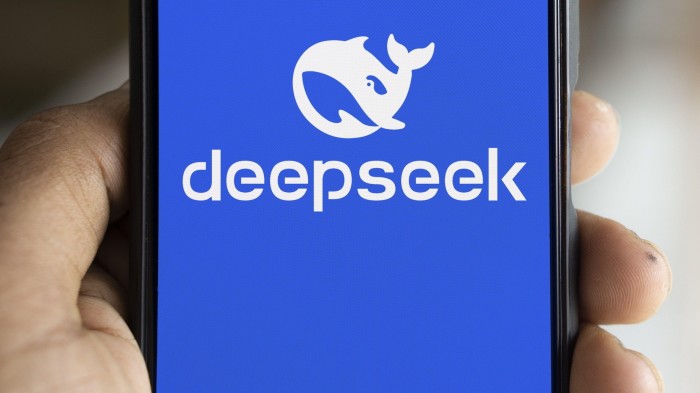Stay informed with free updates
Simply sign up to the Artificial intelligence myFT Digest — delivered directly to your inbox.
The writer is professor of law at the Gould School of Law, University of Southern California, and author of ‘High Wire: How China Regulates Big Tech and Governs Its Economy’
Last month, a Chinese start-up called DeepSeek astonished the international tech community with its latest open-source artificial intelligence model. DeepSeek-V3 delivers a performance comparable to that of better-funded US rivals such as OpenAI. This week it impressed once again with R1, its foray into AI reasoning.
DeepSeek is not a one-off. Since the middle of last year, Chinese tech companies such as Alibaba, Tencent, ByteDance, Moonshot and 01.ai have been steadily narrowing the gap with US peers, matching their capabilities and surpassing them in cost efficiency.
China’s achievements in efficiency are no accident. They are a direct response to the escalating export restrictions imposed by the US and its allies. By limiting China’s access to advanced AI chips, the US has inadvertently spurred its innovation.
To reduce reliance on high-end chips from overseas, Chinese AI companies have experimented with novel approaches in algorithms, architecture and training strategies. Many have embraced a “mixture-of-experts” approach, focusing on smaller AI models trained on specific data. These can deliver powerful results while reducing computing resources.
DeepSeek-V3 embodies the success of this resourceful approach. According to its technical report, the model was trained using a data centre powered by Nvidia H800 GPUs — a less advanced chip than Nvidia’s latest releases. Despite this, DeepSeek completed training in just two months at a cost of $5.5mn — a fraction of the sums reportedly spent by US companies such as OpenAI.
DeepSeek has also drastically reduced inference costs, earning it the nickname the “Pinduoduo of AI”, a reference to the cost-slashing business model of the popular Chinese discount ecommerce giant. This breakthrough has profound implications. It challenges the widely held assumption that cutting-edge AI requires vast amounts of computational power and many billions of dollars. DeepSeek demonstrates how software ingenuity can offset hardware constraints.
It also lays bare the limits of US export controls designed to slow China’s AI progress. While these measures may deliver short-term disruptions, their impact diminishes over time as China innovates to adapt.
The inconvenient truth for US policymakers is that strict export controls have forced Chinese tech companies to become more self-reliant, spurring breakthroughs that might not have occurred otherwise.
Not everyone agrees, however. Gregory Allen, director of the Wadhwani AI Center, at the Center for Strategic and International Studies think-tank, contends that China would have advanced regardless of US restrictions.
Certainly, the Chinese government has long aspired to make the country into an AI superpower. But its record in resource allocation is poor. State-led initiatives often result in inefficiency, corruption and waste — a reality starkly illustrated by high-profile scandals and slow progress in the country’s semiconductor industry.
What American AI restrictions inadvertently achieved was a powerful commercial incentive for China’s private sector to step into the gap. And while the US often dominates in groundbreaking research, Chinese companies excel in execution, affordability and product diffusion. In ecommerce, electric vehicles, solar panels and batteries, they have demonstrated an impressive ability to scale up.
The rise of DeepSeek is a vivid reminder that constraints can fuel innovation. For Donald Trump’s new administration, this raises an uncomfortable question: will ever-tighter sanctions on China accelerate the very progress they are designed to suppress?



